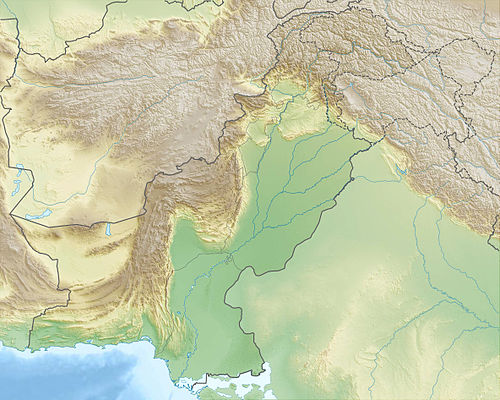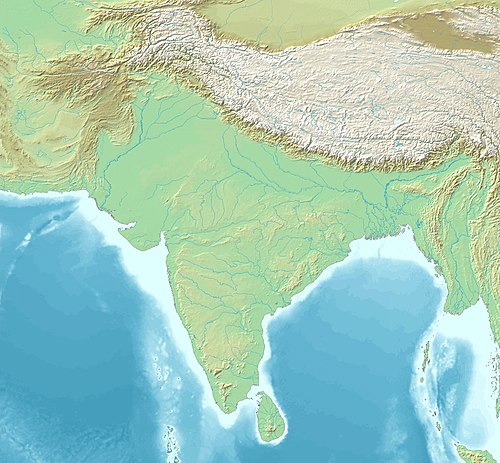Seri Bahlol
Archaeological site in Pakistan From Wikipedia, the free encyclopedia
Seri Bahlol (Urdu: سری بہلول), also Sahr-i Bahlol or Sahri Bahlol, is a city and archaeological site located near Takht-i-Bahi, in Mardan District, about 70 kilometer north-west of Peshawar, Khyber Pakhtunkhwa, Pakistan.
| UNESCO World Heritage Site | |
|---|---|
 | |
| Location | Mardan District, Khyber Pakhtunkhwa, Pakistan, |
| Part of | Buddhist Ruins of Takht-i-Bahi and Neighbouring City Remains at Seri Bahlol |
| Criteria | Cultural: (iv) |
| Reference | 140-002 |
| Inscription | 1980 (4th Session) |
| Coordinates | 34°15′19.71″N 71°57′02.48″E / 34.2554750; 71.9506889][[Category:Pages using gadget WikiMiniAtlas]]"},"html":"Coordinates: </templatestyles>\"}' data-mw='{\"name\":\"templatestyles\",\"attrs\":{\"src\":\"Module:Coordinates/styles.css\"},\"body\":{\"extsrc\":\"\"}}'/>34°15′19.71″N 71°57′02.48″E / 34.2554750°N 71.9506889°E"}"> |
History
Summarize
Perspective

Seri Bahlol is a historical place and it has been included in the UNESCO World Heritage List since 1980.[1] The ruins of Seri Bahlol are the remnants of a small ancient fortified town built during the Kushan period.[1][2] The city was protected during the time of John Marshall.[3]
It contains the remains of Buddha, which have not been properly excavated. Antiques such as statues, coins, utensils and jewellery are commonly found.[4] The local people continue illegal excavation in their homes and land, damaging the historical monuments. Some of the local dealers of antiques misguide the local population and instigate them to involve in illegal excavation. It requires national and international attention in order to reserve the remnants at Seri Bahlol.[1]
The word "Seri Bahlol" has been explained by various people in different ways. The local people, however, explains that this is a combination of two Hindi words "Sheri" means Sir and "Bahlol" the name of a prominent political and religious leader of the area. However, the name is not as old as the village Seri Bahlol. The village is located on a hillock protected by a well sophisticated stone wall which was constructed under the Kushans.[1] The wall is damaged in several places, but it is still visible in many places. The village is surrounded by fertile land where local people practice agriculture. For the last few years, the rapid population growth has engulfed the agriculture land which is a risk for food security.[citation needed]
Gallery
- A farmer applying pesticides to his crop
- A view of the village
- Excavations in 1911-1912.
- Meditating Bodhisattva. Schist. Sahr-i-Bahlol. Patna Museum
- Preaching Buddha.
- Head of a bodhisattva.
- Bodhisattva.
- Standing Bodhisattva.
- Buddha statues.
- Seated Buddha triad, Sahri Bahlol excavations, 1911-1912.
- Great Buddha of Sahri Bahlol 1909 excavation (upright)
- Sahri Bahlol Buddha, excavated 1909-1910, Peshawar Museum
- Bronze Buddha image, British Museum.
See also
Wikimedia Commons has media related to Seri Bahlol.
References
Wikiwand - on
Seamless Wikipedia browsing. On steroids.

















